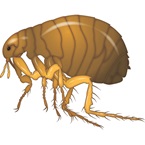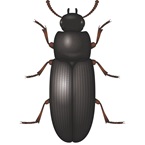Classification
Scientific name: Tineola bisselliella
Family: Oecophoridae
Description
They are typically 7–8 mm in length when the wings are folded and have a 10-15mm wingspan.
Each female lays up to 160 eggs during a period of 2-3 weeks. During the summer these hatch in 4-10 days to give an active, white translucent larva. This grows up to 10mm in length and the head becomes darker in colour.
They are natives of Europe and Asia but are now widespread across Australia.
Common on animal products, they enjoy dark environments and domestically they are typically found in wardrobes, clothes chests, linen baskets and under beds.
Behaviour
Moths lay eggs on a food source which the larvae can eat. Clothes Moths select any type of natural fibre such as wool, silk or even cotton. The larvae feed themselves until pupal stage, destroying fabrics.
These insects hide in darkness and create tiny eggs, making it difficult to spot an infestation, allowing plenty of opportunity to multiply unnoticed.
They crave moisture, enjoying fibres with sweat, food or drink stains, even on clothes that have just been worn once.
Risks
Clothes moths attack animal products, for e.g. wool, fur, skins and leather. Fibres are bitten off and the loose ends discarded, destroying a much greater amount of the product than what is consumed.
All types of soft furnishings, carpets and clothing are vulnerable but more expensive fabrics tend to have holes first. Moths do not eat artificial fibres.


